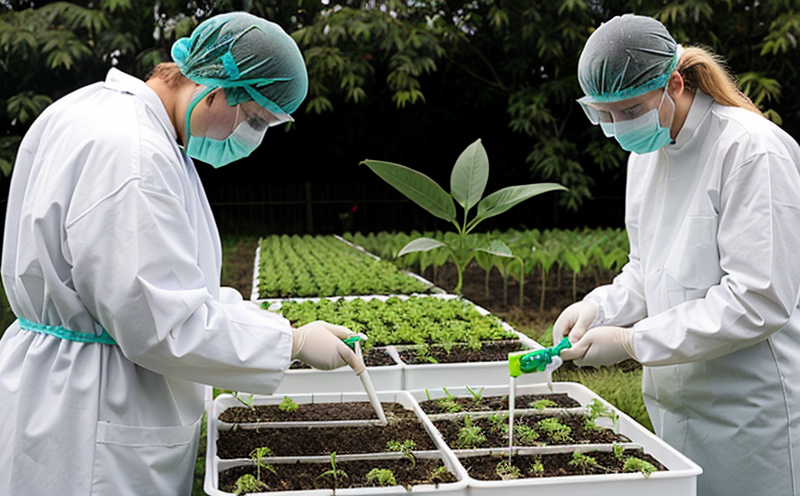DNA Sequencing for Plant Pathogen Identification
In agriculture and forestry, plant diseases can have devastating effects on crop yields and overall ecosystem health. Traditional methods of identifying plant pathogens are time-consuming and often lack the precision necessary to differentiate between closely related species or strains. DNA sequencing has revolutionized this field by providing an accurate, rapid, and reliable means of identifying plant pathogens at a molecular level.
The process involves extracting DNA from plant samples, which may include leaves, stems, roots, or other parts showing signs of disease. The extracted DNA is then subjected to fragmentation and amplification processes that prepare it for sequencing. Modern high-throughput sequencers can generate vast amounts of sequence data, enabling detailed analysis.
The identification process itself involves comparing the obtained sequences with reference databases of known plant pathogens. This approach allows not only for species-level identification but also strain-specific differentiation. This capability is particularly crucial in managing diseases that are rapidly evolving or have been introduced through new pathways.
DNA sequencing can also be used to monitor the spread and evolution of pathogens, providing valuable insights into epidemiology. Additionally, it aids in the development of targeted strategies for disease control and management, including the breeding of resistant plant varieties.
For quality managers and compliance officers, DNA sequencing ensures adherence to international standards such as ISO 13408-2:2017, which specifies requirements for the validation of laboratory methods. In R&D contexts, this technology supports innovation in crop protection and sustainable agriculture practices.
The precision offered by DNA sequencing allows for early detection and intervention, minimizing economic losses and environmental impacts. For procurement teams, it provides a robust framework for selecting suppliers who can deliver pathogen-free products or materials.
Scope and Methodology
| Step | Description |
|---|---|
| Sample Collection | Collecting representative samples from affected plants, ensuring they are free of external contaminants. |
| DNA Extraction | Extracting high-quality DNA using appropriate reagents and protocols to ensure integrity for sequencing. |
| Library Preparation | Preparing the extracted DNA into a format suitable for next-generation sequencing, including amplification steps if necessary. |
| Sequencing | Using high-throughput sequencers to generate sequence data from the prepared samples. |
| Data Analysis | Analyzing the generated sequences through bioinformatics tools, comparing them against reference databases of known pathogens. |
| Validation and Reporting | Validating results with additional tests if necessary and providing detailed reports to clients. |
Eurolab Advantages
At Eurolab, we leverage cutting-edge technology and expertise to provide comprehensive DNA sequencing services for plant pathogen identification. Our team of scientists and technicians is equipped with state-of-the-art facilities that ensure accurate and reliable results.
- High-Quality Equipment: Utilizing the latest sequencers from industry leaders, we guarantee precise sequence data.
- Experienced Staff: Our experts have extensive experience in molecular biology and bioinformatics, ensuring accurate analysis.
- Comprehensive Reporting: Providing detailed reports that include raw data, alignment statistics, and a comprehensive interpretation of results.
Competitive Advantage and Market Impact
- Accurate Identification: By using DNA sequencing, we can identify plant pathogens with unparalleled precision, even those that are difficult to differentiate through traditional means.
- Faster Turnaround Times: Our streamlined processes allow for quicker identification and reporting of results, enabling timely interventions.
- Epidemiological Insights: Understanding the spread and evolution of pathogens is crucial for effective control strategies. Our services provide this critical information.





